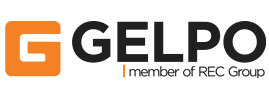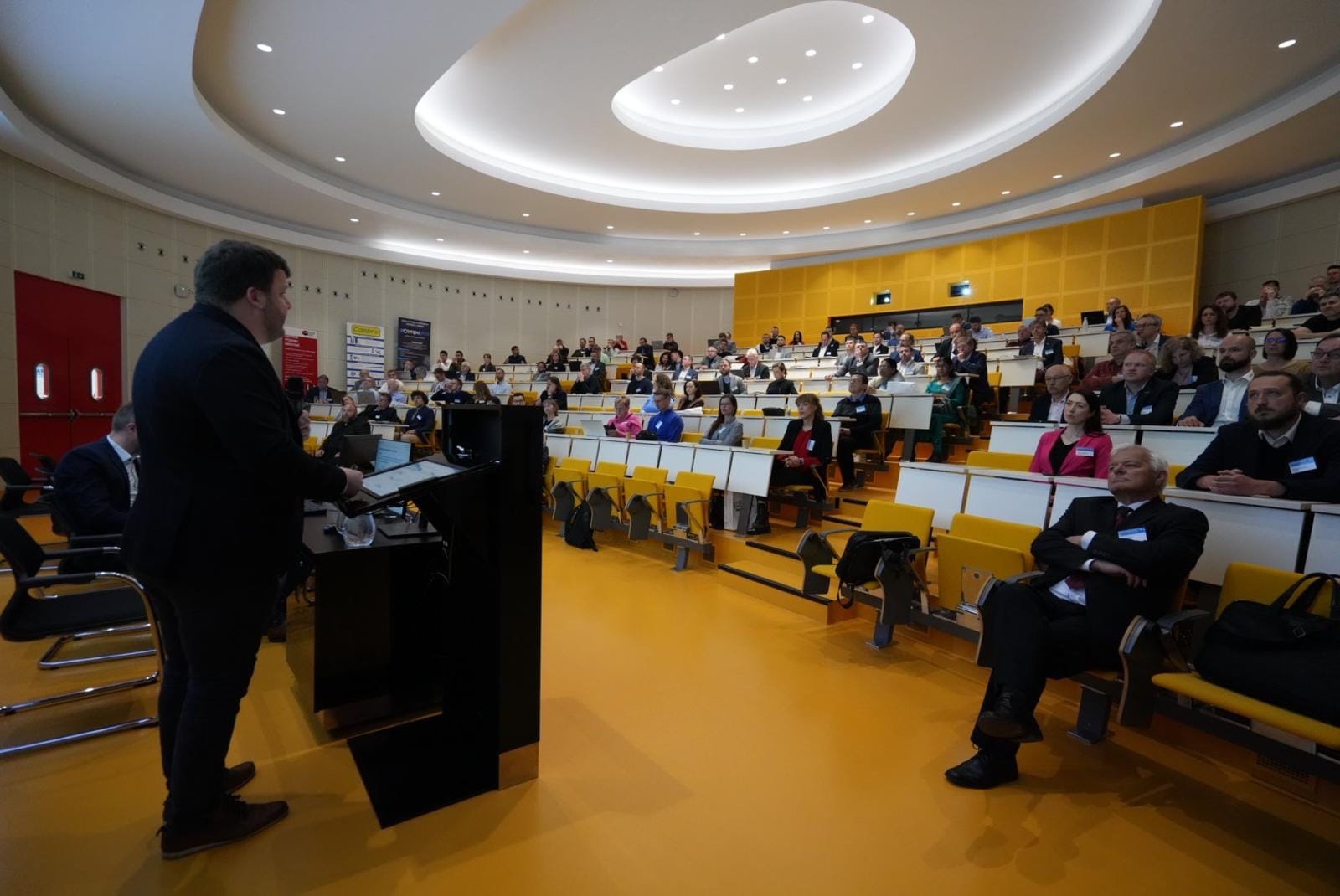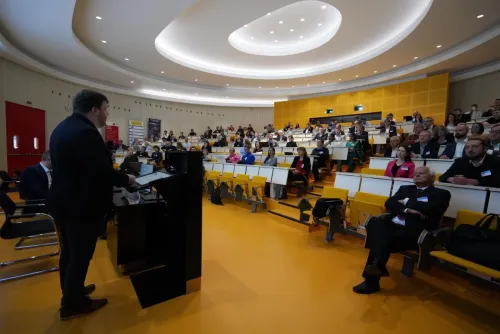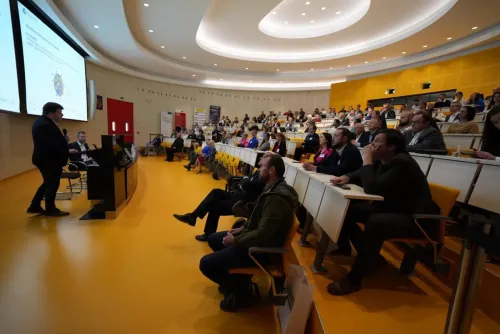On April 17-18, 2024, the professional conference PLASTKO 2024 was held at Thomas Bata University in Zlín. The conference focused on a sustainable future in the world of polymers.
The program was packed with interesting lectures, and we attended the conference to hear what lies ahead for us in the EU in the coming years and how companies need to adapt to new trends. More than 100 experts from materials engineering, polymers, chemistry, physics, nanotechnology, and other fields, and nearly 30 speakers participated in two days full of lectures, discussions, and working groups.
Even though it might seem that the conference has nothing to do with the rubber industry in which our company operates, that is not the case. The conference was full of information regarding ecological transformation in the coming years. Since elastomers fall into the category of polymers and our activity—material recycling—is very close to sustainable development, it is necessary to understand where the market will be heading in terms of sorting, recycling, and sustainability.
For the recycling rubber industry, it is essential to highlight these areas, which may have varying degrees of impact on the processes of tire recycling, rubber, and their transformation into products from secondary raw materials:
1. ESG Strategies of Companies
Global political agreements are implemented in the EU within the Green Deal package. The obligation to issue a sustainability report (ESRS) from the financial year 2025 is based on meeting 2 out of 3 conditions:
Balance sheet total: 25,000,000 euros
Net turnover: 50,000,000 euros
Average number of employees during the accounting period: 250
ESG reports, or sustainability reports, will thus become an integral part of every company, and even if companies are not obliged to report under legislative conditions (see above, meeting 2 out of 3), these obligations will reach small and medium-sized enterprises through large buyers and suppliers, who will collect "points" for their sustainability reports within their value chain.
2. Chemical Recycling
This is a dynamically developing method of material recycling. The main driver of its expansion is the need to meet environmental goals set by EU legislation (decarbonization, reducing carbon footprint). The entire recycling industry is undergoing significant changes due to the planned increase in the recycling rate of plastic waste to 55% by 2040. Among other things, there are requirements for using recycled material in food applications, up to 30% for plastics other than PET.
The question is, can these goals be achieved through conventional mechanical sorting?
3. Laser Spectroscopy Methods for Heavy Metal Quantification
LIBS – Laser-Induced Breakdown Spectroscopy, which allows for quick qualitative and quantitative elemental analysis and, due to its simplicity, can be used in both online and offline operations. LIBS can be used as an indicator of hazardous elements (lead, cadmium, chromium, or mercury).
For the recycling industry and work with various raw materials, this method is very simple and fast for easy and quick identification of heavy metals.
4. Operational Program Environment 2021-2027
Support for the transition from waste management to a circular economy—co-financing activities leading to the improvement of waste management hierarchy application, through investments in prevention, reuse of products, and waste utilization. In the area of material utilization of waste, support is provided for the construction and modernization of collection yards, sorting and re-sorting systems, construction, and modernization of facilities for material utilization of waste, construction, and modernization of facilities for energy utilization of waste, for chemical recycling (only with material endpoint).
The aim of the support is to achieve an intensive transition of waste management to the principles of a circular economy. What does this mean? Binding targets for municipal waste recycling, landfill reduction, new obligations in municipal waste sorting, targets for packaging waste recycling, targets for sorting single-use plastic products, etc. All to comply with the European waste management hierarchy.
Detailed information on the individual lectures at the PLASTKO 2024 conference can be downloaded here: PLASTKO 2024 (utb.cz)





